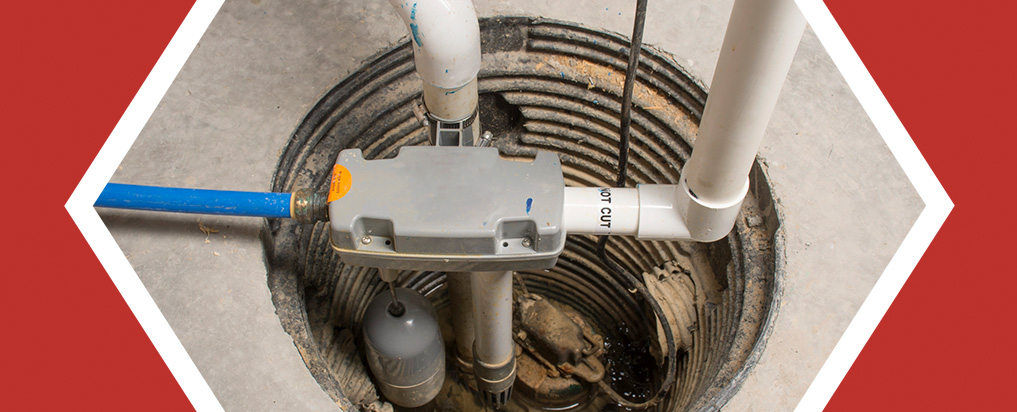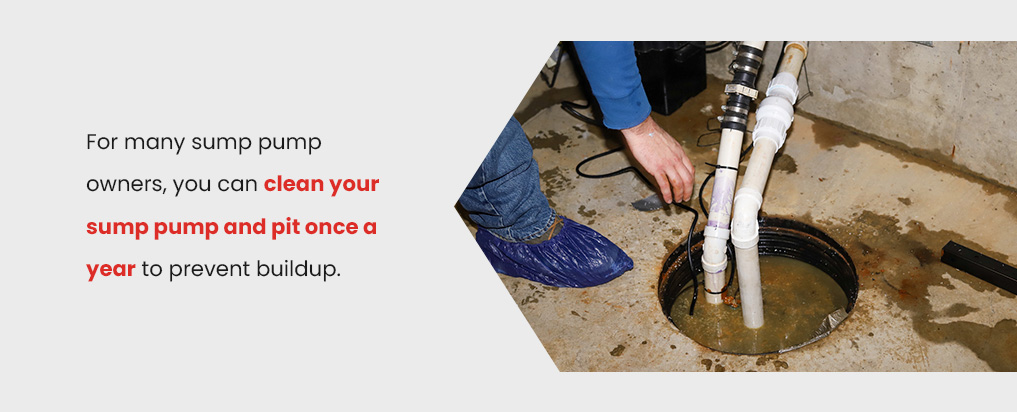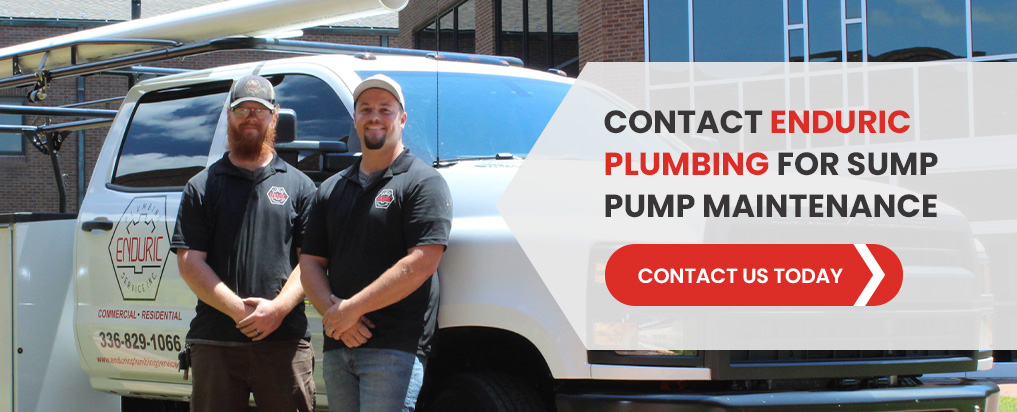
May 17, 2024
Maintaining your sump pump is essential for a long-lasting, effective system. If you have a sump pump, get professional service regularly to keep your home or business flood-free. Having a sump pump means investing in regular cleaning to prevent clogs and buildup from causing problems. Learn the best way to clean out a sump pump with our guide.
Parts of a Sump Pump System
Before you can clean your sump pump, you need to know what you’re working with. Cleaning involves getting in all your sump pump’s nooks and crannies, so make sure you understand a sump pump before you start. Here’s a quick overview of your sump pump’s components to help you perform maintenance and troubleshooting on your own:
- Sump basin: Your sump basin, or sump pit, is the hole dug into the lowest part of your crawl space or basin. It’s where water collects if it enters your space. The sump basin acts as the water reservoir, holding all the water in one place as the sump pump pumps it out.
- Sump pump: The sump pump is your star player. It sits in your sump basin and pumps all the water out and away from your building. Your sump pump will be submersible or on a pedestal, so double-check your model before you start cleaning.
- Check valve: The check valve is installed on the sump pump’s discharge pipe. It helps keep pumped water from flowing back into your sump pit once it’s been pumped out. The check valve prevents unnecessary cycling and keeps your sump pump working longer.
- Discharge pipe: Your discharge pipe carries the water away from the building or to a drainage system. Discharge pipes should be directed away from the foundation to avoid water getting back inside and causing damage.
- Float switch: The float switch controls when your sump pump turns on and off. It’s usually attached to the pump, floating on the water’s surface in the sump basin. The float switch activates when the water level reaches a certain height. It lets the sump pump know it’s time to turn on and pump water. Once the water level reaches a set amount, the float switch turns the system off.
How Do You Clean a Sump Pump?
A clean sump pump is a happy sump pump. Learning how to clean your sump pumps keeps you on top of essential maintenance. If you want to avoid clogs, flooding and premature failure, you need to know how to keep a sump pump clean.
Every sump pump cleaning needs the right tools. Get these together ahead of time to help you ensure an effective cleaning:
- Tarps
- Buckets
- Screwdriver
- Clean water
- Rubber gloves
- Wire brush or old toothbrush
- Mild dish soap or white vinegar
- Wet/dry vacuum, if needed
1. Prep for Cleaning
Before starting your maintenance:
- Take safety precautions.
- Put on gloves to protect your hands from debris when cleaning your sump pump. You should also wear protective shoes and clothes you don’t mind getting dirty.
- Ensure you’ve read the cleaning guide carefully and have all the necessary tools ready.
Prepping for cleaning will make the process smoother and safer.
2. Test the Pump
Test your sump pump before cleaning. You can do this by filling the sump pit with water so it begins pumping. If your sump pump is working incorrectly, turn it off and call a professional. They can fix the problem so your next cleaning goes smoothly. Cleaning a broken sump pump could make the issue worse, leaving you with a flooding problem.
3. Unplug the System
If your pump is working, it’s time to unplug it. First, turn off the pump, then unplug it from the power source. This will protect you from electric shocks while you’re cleaning the pump. It also protects the pump from electrical damage.
4. Access the Pump
Go to the pit and remove the cover or lid if your sump pit has one. You need to get inside the pit to access your sump pump. You might have to use a screwdriver to take out the bolts and screws holding the cover in place.
5. Remove the Pump
Look at your sump pump for visible damage. If you see a problem, stop and call a plumber to be safe. Otherwise, use your screwdriver to disconnect your pump from the pipe right below the check valve. You’ll want to have a bucket or tarp on hand to catch any water or debris released during this process. Move your pipe to where you’ll clean it.
6. Inspect the Area
Take a moment to inspect your sump pit. Any debris and dirt in it will eventually flow into your sump pump, making it dirty again. Use a bucket to remove visible sediment, debris and dirt from the sump pit to prevent clogs. If your pit is especially dirty, use a 2:1 ratio of warm water and vinegar to soak it. Then, after reconnecting your pump, you can drain the pit and rinse it with clean water.
7. Start Cleaning
Take your soft wire brush or toothbrush and gently scrub the sump pump. You can use water or a 1:1 vinegar-water mix to scrub the dirty spots. Adding a dash of dish soap to your water can also clean your sump pump — just remember to rinse it thoroughly. Avoid using harsh chemicals since they can damage your pump components.
8. Check the Float Switch
After cleaning, inspect your float switch to make sure it can move freely. Gently clean the float switch and the surrounding area so it can work efficiently. You can contact a professional for advice if you notice damage on your float switch.
9. Test Again
Reconnect your sump pump and plug the power back in. Then, test your pump again. This extra test helps you ensure nothing went wrong during your cleaning. Ensure your pump turns on and off as expected and carries water away efficiently. If your pump passes testing, reinstall the cover and any other components you moved. Your sump pump should be ready to go.

How Often Should You Clean Your Sump Pump?
You should clean out your sump pump as needed to deal with debris. For many sump pump owners, you can clean your sump pump and pit once a year to prevent buildup. If your sump pump collects washing machine discharge, you must clean it every three to four months. Additionally, getting your sump pump assessed annually is recommended to keep it well-maintained and working effectively.
Contact Enduric Plumbing for Sump Pump Maintenance
Enduric plumbing is your source for everything plumbing-related. Our expert plumbing services cover drain cleaning, water heaters, sewer and water lines and water softener filtration systems for residences and commercial buildings. At Enduric Plumbing, we’re committed to customer service and a better plumbing experience. We’ll perform your cleaning, maintenance, inspection, repair and replacement when needed, keeping your systems running efficiently. Contact us today to learn how we can serve you!



